
Category of Astronomical Heritage: tangible immovable
Barnard Observatory, University of Mississippi, Oxford, MS, USA

Format: IAU - Outstanding Astronomical Heritage
Description
Geographical position - InfoTheme: Astronomy from the Renaissance to the mid-twentieth century
Entity: 210
Subentity: 1
Version: 2
Status: PUB
Date: 2021-09-29 02:10:18
Author(s): Gudrun Wolfschmidt
Barnard Observatory, University of Mississippi (Ole Miss), University Circle, Oxford, MS 38655, Lafayette County, MS, USA
Location - InfoTheme: Astronomy from the Renaissance to the mid-twentieth century
Entity: 210
Subentity: 1
Version: 2
Status: PUB
Date: 2021-09-29 02:11:03
Author(s): Gudrun Wolfschmidt
Latitude 34°21’58’’ N, Longitude 89°32’4’’ W, Elevation ...m above mean sea level.
IAU observatory code - InfoTheme: Astronomy from the Renaissance to the mid-twentieth century
Entity: 210
Subentity: 1
Version: 1
Status: PUB
Date: 2021-09-29 02:02:32
Author(s): Gudrun Wolfschmidt
-
Description of (scientific/cultural/natural) heritage - InfoTheme: Astronomy from the Renaissance to the mid-twentieth century
Entity: 210
Subentity: 1
Version: 2
Status: PUB
Date: 2021-09-29 02:11:48
Author(s): Gudrun Wolfschmidt
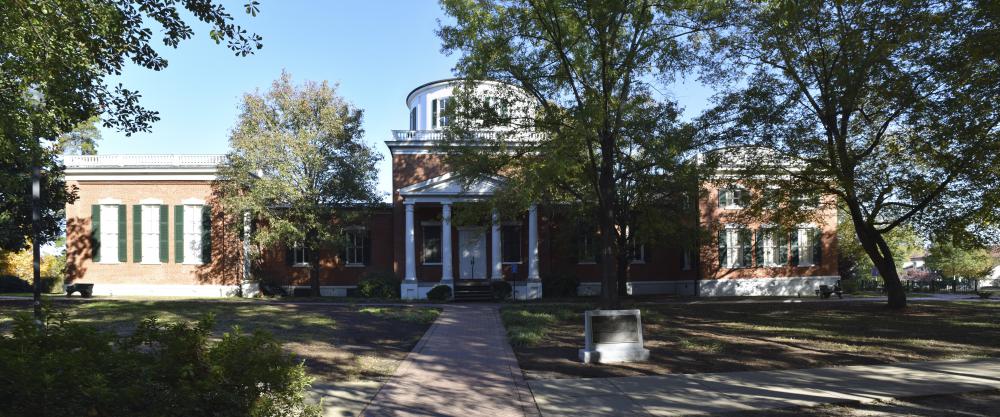
Fig. 1. Barnard Observatory (1857-1859) (Wikipedia)
Barnard Observatory’s architectural style is Greek Revival, completed in 1859.
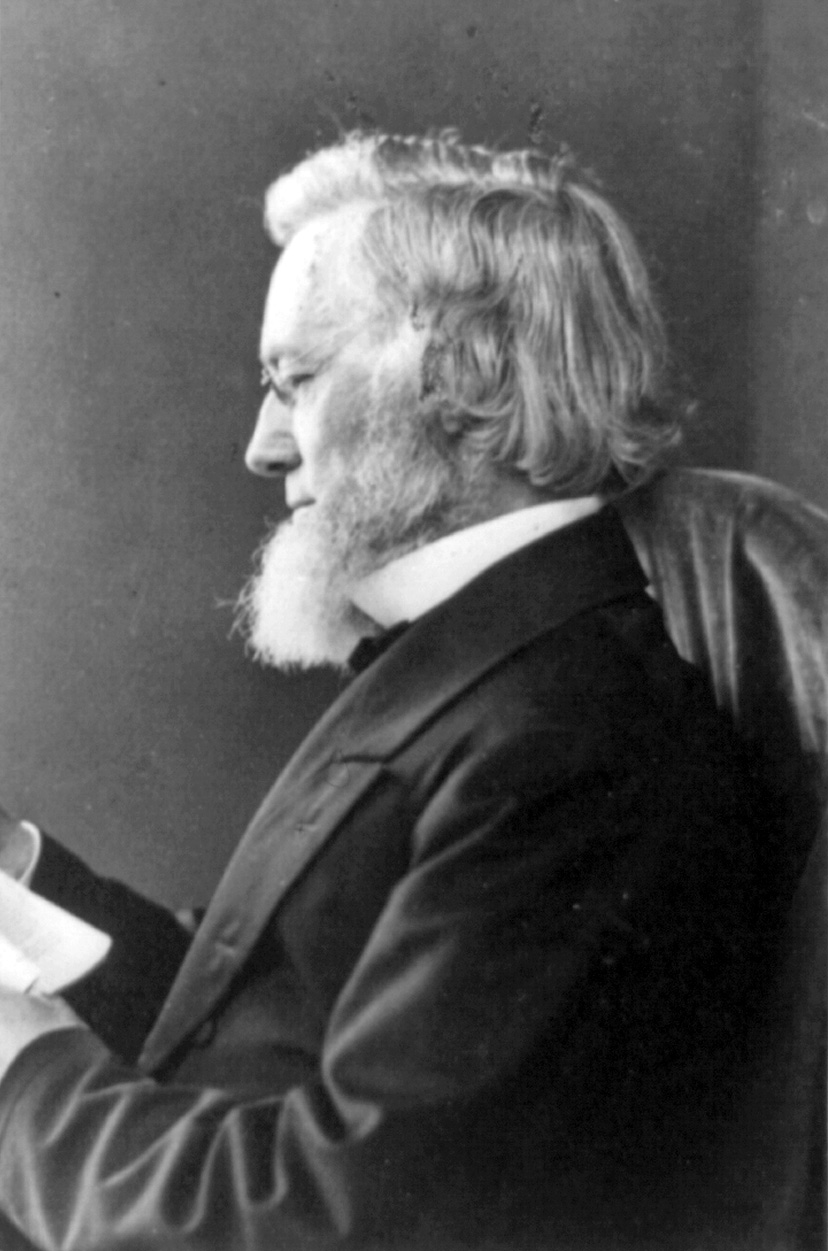
Fig. 2. Frederick Augustus Porter Barnard (1809--1889)
It was initiated by Frederick Augustus Porter Barnard (1809--1889), chancellor from 1856 to 1861, after visiting the observatory at Harvard, built in 1844. Harvard and the Barnard Observatory were inspired by the architecture of the Poulkovo Observatory, St. Petersburg, Russia, built in 1839. The footprint was an H with the legs facing true north and south.
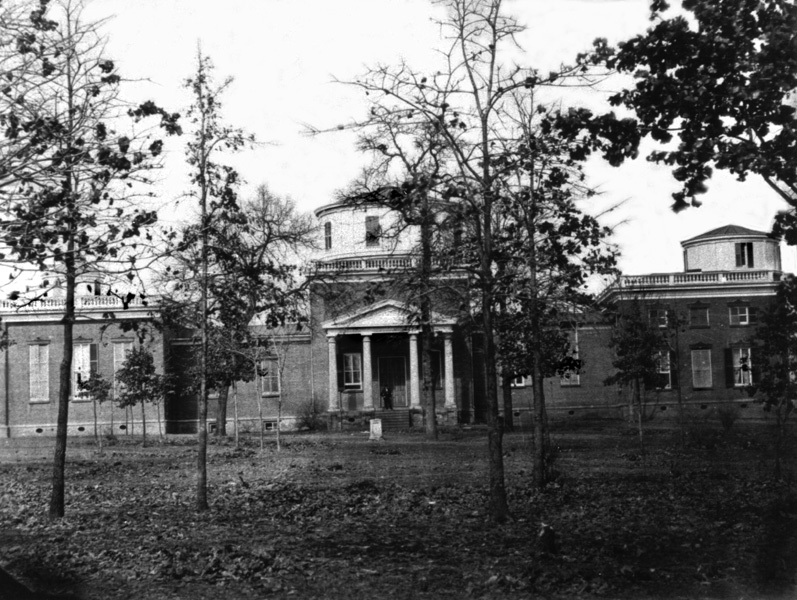
Fig. 3a. Barnard Observatory (photo: Prof. Edward C. Boynton, ca. 1860)
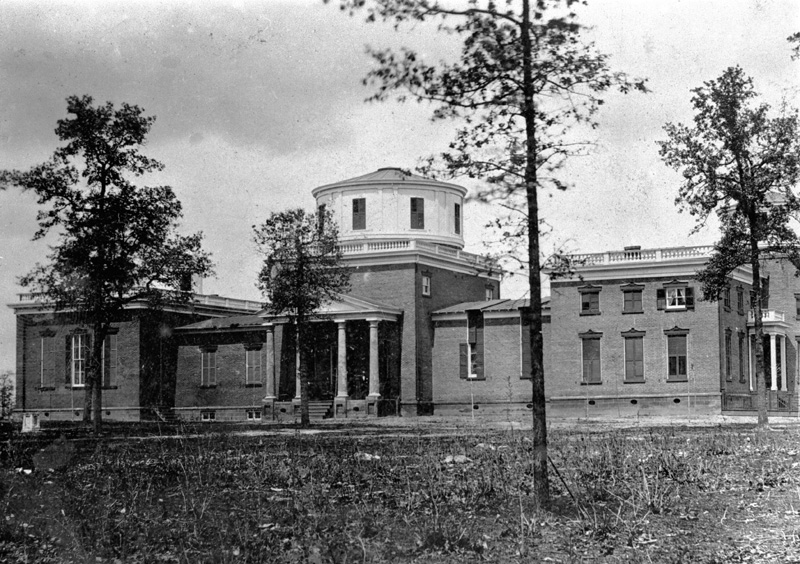
Fig. 3b. Barnard Observatory (photo: Prof. Edward C. Boynton, ca. 1860)
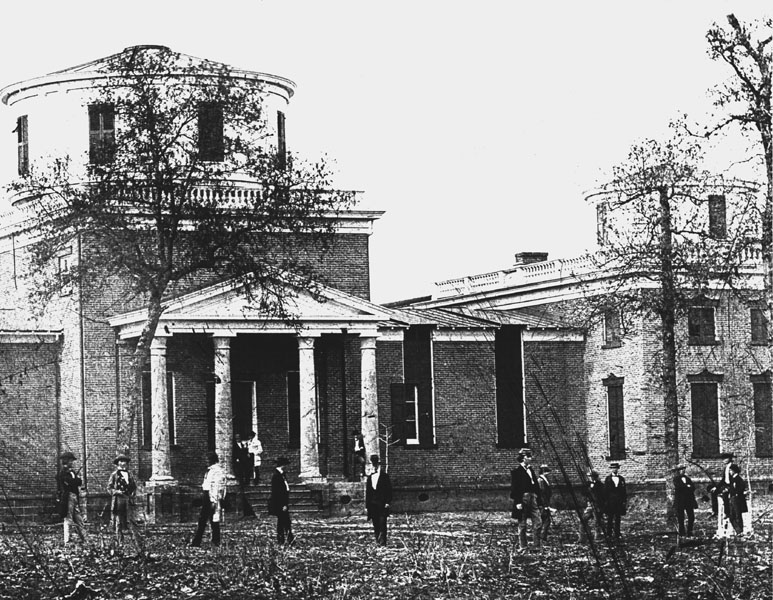
Fig. 3c. Barnard Observatory (photo: Prof. Edward C. Boynton, ca. 1860)
In the central dome should be the large refractor; the smaller domes on both wings were intended for a comet seeker and a smaller telescope.
But due to the Civil War, the university was closed in 1861. The large refractor, the world’s largest telescope as intended by Barnard, ordered from Alvan Clark & Sons, was never delivered; it was bought to Dearborn Observatory, University of Chicago, then to Dearborn Observatory, Northwestern University.
During the test of the 18.5-inch (470mm) telescope in Cambridgeport, Massachusetts, Alvan Graham Clark (1832--1897), the son of Alvan Clark (1804--1887), discovered Sirius B in 1862.
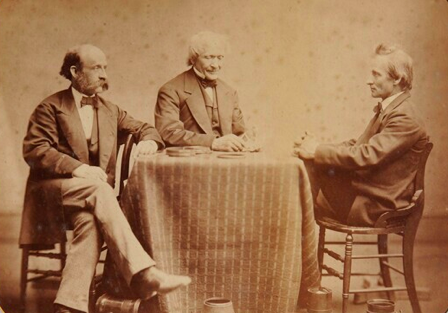
Fig. 4. Alvan Clark & Sons, George Bassett Clark (1827--1891) and Alvan Graham Clark (1832--1897), by T.R. Burnham, Boston (Wikipedia)
Barnard Observatory was used as a hospital, for the Department of Physics and Astronomy in the early 1900s, the Department of Naval Sciences, and the Alpha Xi Delta sorority.
History - InfoTheme: Astronomy from the Renaissance to the mid-twentieth century
Entity: 210
Subentity: 1
Version: 3
Status: PUB
Date: 2021-11-07 20:54:18
Author(s): Gudrun Wolfschmidt
Instruments
- The Millington & Barnard Collection of 19th century physics instruments
are now part of the collections in the University of Mississippi Museums.
State of preservation - InfoTheme: Astronomy from the Renaissance to the mid-twentieth century
Entity: 210
Subentity: 1
Version: 2
Status: PUB
Date: 2021-09-29 02:12:49
Author(s): Gudrun Wolfschmidt
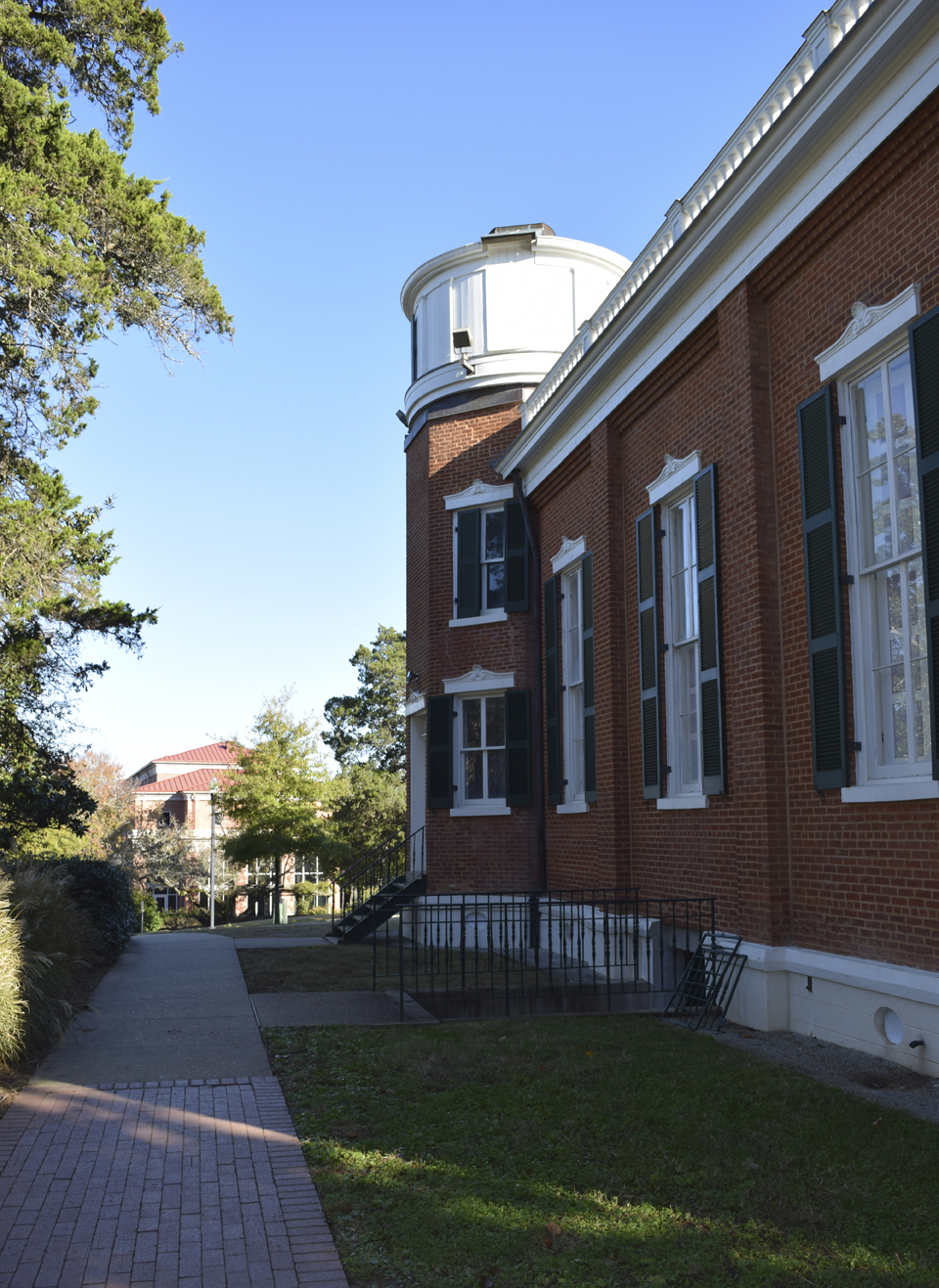
Fig. 5. Barnard Observatory, University of Mississippi (Wikipedia, CC4, Fredlyfish4)
The Barnard Observatory is included in the U.S. National Register of Historic Places, NRHP reference No. 78001607, December 8, 1978.
Comparison with related/similar sites - InfoTheme: Astronomy from the Renaissance to the mid-twentieth century
Entity: 210
Subentity: 1
Version: 2
Status: PUB
Date: 2021-09-29 02:13:35
Author(s): Gudrun Wolfschmidt
The Barnard Observatory was built - like Harvard - after the model of Pulkovo Observatory - with three cylindrical domes.
Threats or potential threats - InfoTheme: Astronomy from the Renaissance to the mid-twentieth century
Entity: 210
Subentity: 1
Version: 2
Status: PUB
Date: 2021-09-29 02:13:58
Author(s): Gudrun Wolfschmidt
no threats
Present use - InfoTheme: Astronomy from the Renaissance to the mid-twentieth century
Entity: 210
Subentity: 1
Version: 2
Status: PUB
Date: 2021-09-29 02:14:27
Author(s): Gudrun Wolfschmidt
Today the Barnard Observatory houses the Center for the Study of Southern Culture.
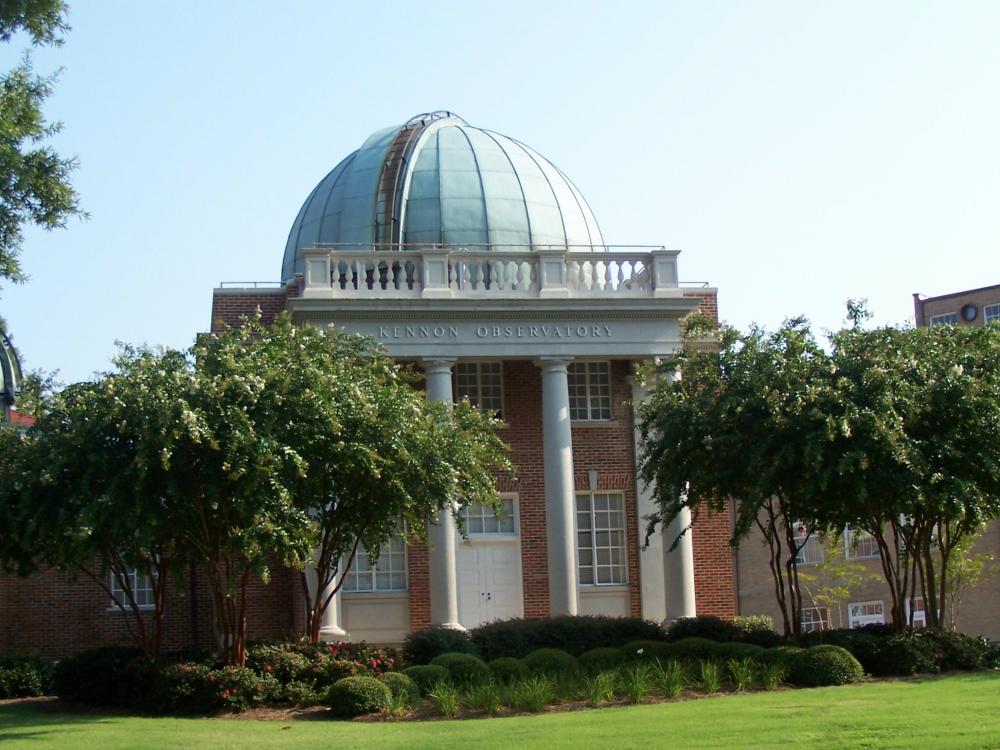
Fig. 6. Kennon Observatory, University of Mississippi (Wikipedia)
The university’s astronomers use now the Kennon Observatory, built in 1939 (34°21’51.3’’ N 89°32’11.2’’ W), named after William Lee Kennon, Chair of Physics and Astronomy for 40 years.
"Two copper-roofed domes were included to accomodate two different instruments: a fifteen inch telescope, with co-aligned visual and photographic telescopes, was moved into the bigger dome, while the smaller dome housed a five inch telescope that had been acquired by F.A.P. Barnard in about 1856. The slanted metal roof of the transit room (between the main and small dome) was designed to open for observations using a three inch meridian telescope."
Astronomical relevance today - InfoTheme: Astronomy from the Renaissance to the mid-twentieth century
Entity: 210
Subentity: 1
Version: 2
Status: PUB
Date: 2021-09-29 02:14:52
Author(s): Gudrun Wolfschmidt
The Barnard Observatory is no longer in astronomical use.
References
Bibliography (books and published articles) - InfoTheme: Astronomy from the Renaissance to the mid-twentieth century
Entity: 210
Subentity: 1
Version: 3
Status: PUB
Date: 2021-09-29 02:16:53
Author(s): Gudrun Wolfschmidt
- Sansing, David: The University of Mississippi: A Sesquicentennial History. Oxford: University Press of Mississippi 1999.
Links to external sites - InfoTheme: Astronomy from the Renaissance to the mid-twentieth century
Entity: 210
Subentity: 1
Version: 3
Status: PUB
Date: 2021-09-29 02:16:31
Author(s): Gudrun Wolfschmidt
- Barnard Observatory, University of Mississippi in Oxford, Mississippi, Completed in 1859
- Barnard Observatory, University of Mississippi in Oxford, Mississippi (Wikipedia)
- The Department of Physics and Astronomy at The University of Mississippi
- Kennon_Observatory
Links to external on-line pictures - InfoTheme: Astronomy from the Renaissance to the mid-twentieth century
Entity: 210
Subentity: 1
Version: 1
Status: PUB
Date: 2021-09-29 02:02:32
Author(s): Gudrun Wolfschmidt
no information available
PrintPrint contents of 'Description' tab
(opens in a new window) Theme
Astronomy from the Renaissance to the mid-twentieth century
Case Study Navigation
- InfoTheme: Astronomy from the Renaissance to the mid-twentieth century
Entity: 210
Subentity: 1
Version: 2
Status: PUB
Date: 2021-09-29 02:10:18
Author(s): Gudrun Wolfschmidt
Barnard Observatory, University of Mississippi (Ole Miss), University Circle, Oxford, MS 38655, Lafayette County, MS, USA
Location - InfoTheme: Astronomy from the Renaissance to the mid-twentieth century
Entity: 210
Subentity: 1
Version: 2
Status: PUB
Date: 2021-09-29 02:11:03
Author(s): Gudrun Wolfschmidt
Latitude 34°21’58’’ N, Longitude 89°32’4’’ W, Elevation ...m above mean sea level.
IAU observatory code - InfoTheme: Astronomy from the Renaissance to the mid-twentieth century
Entity: 210
Subentity: 1
Version: 1
Status: PUB
Date: 2021-09-29 02:02:32
Author(s): Gudrun Wolfschmidt
-
Description of (scientific/cultural/natural) heritage - InfoTheme: Astronomy from the Renaissance to the mid-twentieth century
Entity: 210
Subentity: 1
Version: 2
Status: PUB
Date: 2021-09-29 02:11:48
Author(s): Gudrun Wolfschmidt

Fig. 1. Barnard Observatory (1857-1859) (Wikipedia)
Barnard Observatory’s architectural style is Greek Revival, completed in 1859.

Fig. 2. Frederick Augustus Porter Barnard (1809--1889)
It was initiated by Frederick Augustus Porter Barnard (1809--1889), chancellor from 1856 to 1861, after visiting the observatory at Harvard, built in 1844. Harvard and the Barnard Observatory were inspired by the architecture of the Poulkovo Observatory, St. Petersburg, Russia, built in 1839. The footprint was an H with the legs facing true north and south.

Fig. 3a. Barnard Observatory (photo: Prof. Edward C. Boynton, ca. 1860)

Fig. 3b. Barnard Observatory (photo: Prof. Edward C. Boynton, ca. 1860)

Fig. 3c. Barnard Observatory (photo: Prof. Edward C. Boynton, ca. 1860)
In the central dome should be the large refractor; the smaller domes on both wings were intended for a comet seeker and a smaller telescope.
But due to the Civil War, the university was closed in 1861. The large refractor, the world’s largest telescope as intended by Barnard, ordered from Alvan Clark & Sons, was never delivered; it was bought to Dearborn Observatory, University of Chicago, then to Dearborn Observatory, Northwestern University.
During the test of the 18.5-inch (470mm) telescope in Cambridgeport, Massachusetts, Alvan Graham Clark (1832--1897), the son of Alvan Clark (1804--1887), discovered Sirius B in 1862.

Fig. 4. Alvan Clark & Sons, George Bassett Clark (1827--1891) and Alvan Graham Clark (1832--1897), by T.R. Burnham, Boston (Wikipedia)
Barnard Observatory was used as a hospital, for the Department of Physics and Astronomy in the early 1900s, the Department of Naval Sciences, and the Alpha Xi Delta sorority.
History - InfoTheme: Astronomy from the Renaissance to the mid-twentieth century
Entity: 210
Subentity: 1
Version: 3
Status: PUB
Date: 2021-11-07 20:54:18
Author(s): Gudrun Wolfschmidt
Instruments
- The Millington & Barnard Collection of 19th century physics instruments
are now part of the collections in the University of Mississippi Museums.
State of preservation - InfoTheme: Astronomy from the Renaissance to the mid-twentieth century
Entity: 210
Subentity: 1
Version: 2
Status: PUB
Date: 2021-09-29 02:12:49
Author(s): Gudrun Wolfschmidt

Fig. 5. Barnard Observatory, University of Mississippi (Wikipedia, CC4, Fredlyfish4)
The Barnard Observatory is included in the U.S. National Register of Historic Places, NRHP reference No. 78001607, December 8, 1978.
Comparison with related/similar sites - InfoTheme: Astronomy from the Renaissance to the mid-twentieth century
Entity: 210
Subentity: 1
Version: 2
Status: PUB
Date: 2021-09-29 02:13:35
Author(s): Gudrun Wolfschmidt
The Barnard Observatory was built - like Harvard - after the model of Pulkovo Observatory - with three cylindrical domes.
Threats or potential threats - InfoTheme: Astronomy from the Renaissance to the mid-twentieth century
Entity: 210
Subentity: 1
Version: 2
Status: PUB
Date: 2021-09-29 02:13:58
Author(s): Gudrun Wolfschmidt
no threats
Present use - InfoTheme: Astronomy from the Renaissance to the mid-twentieth century
Entity: 210
Subentity: 1
Version: 2
Status: PUB
Date: 2021-09-29 02:14:27
Author(s): Gudrun Wolfschmidt
Today the Barnard Observatory houses the Center for the Study of Southern Culture.

Fig. 6. Kennon Observatory, University of Mississippi (Wikipedia)
The university’s astronomers use now the Kennon Observatory, built in 1939 (34°21’51.3’’ N 89°32’11.2’’ W), named after William Lee Kennon, Chair of Physics and Astronomy for 40 years.
"Two copper-roofed domes were included to accomodate two different instruments: a fifteen inch telescope, with co-aligned visual and photographic telescopes, was moved into the bigger dome, while the smaller dome housed a five inch telescope that had been acquired by F.A.P. Barnard in about 1856. The slanted metal roof of the transit room (between the main and small dome) was designed to open for observations using a three inch meridian telescope."
Astronomical relevance today - InfoTheme: Astronomy from the Renaissance to the mid-twentieth century
Entity: 210
Subentity: 1
Version: 2
Status: PUB
Date: 2021-09-29 02:14:52
Author(s): Gudrun Wolfschmidt
The Barnard Observatory is no longer in astronomical use.
References
Bibliography (books and published articles) - InfoTheme: Astronomy from the Renaissance to the mid-twentieth century
Entity: 210
Subentity: 1
Version: 3
Status: PUB
Date: 2021-09-29 02:16:53
Author(s): Gudrun Wolfschmidt
- Sansing, David: The University of Mississippi: A Sesquicentennial History. Oxford: University Press of Mississippi 1999.
Links to external sites - InfoTheme: Astronomy from the Renaissance to the mid-twentieth century
Entity: 210
Subentity: 1
Version: 3
Status: PUB
Date: 2021-09-29 02:16:31
Author(s): Gudrun Wolfschmidt
- Barnard Observatory, University of Mississippi in Oxford, Mississippi, Completed in 1859
- Barnard Observatory, University of Mississippi in Oxford, Mississippi (Wikipedia)
- The Department of Physics and Astronomy at The University of Mississippi
- Kennon_Observatory
Links to external on-line pictures - InfoTheme: Astronomy from the Renaissance to the mid-twentieth century
Entity: 210
Subentity: 1
Version: 1
Status: PUB
Date: 2021-09-29 02:02:32
Author(s): Gudrun Wolfschmidt
no information available
PrintPrint contents of 'Description' tab
(opens in a new window) Theme
Astronomy from the Renaissance to the mid-twentieth century
Case Study Navigation
- InfoTheme: Astronomy from the Renaissance to the mid-twentieth century
Entity: 210
Subentity: 1
Version: 2
Status: PUB
Date: 2021-09-29 02:11:03
Author(s): Gudrun Wolfschmidt
Latitude 34°21’58’’ N, Longitude 89°32’4’’ W, Elevation ...m above mean sea level.
IAU observatory code - InfoTheme: Astronomy from the Renaissance to the mid-twentieth century
Entity: 210
Subentity: 1
Version: 1
Status: PUB
Date: 2021-09-29 02:02:32
Author(s): Gudrun Wolfschmidt
-
Description of (scientific/cultural/natural) heritage - InfoTheme: Astronomy from the Renaissance to the mid-twentieth century
Entity: 210
Subentity: 1
Version: 2
Status: PUB
Date: 2021-09-29 02:11:48
Author(s): Gudrun Wolfschmidt

Fig. 1. Barnard Observatory (1857-1859) (Wikipedia)
Barnard Observatory’s architectural style is Greek Revival, completed in 1859.

Fig. 2. Frederick Augustus Porter Barnard (1809--1889)
It was initiated by Frederick Augustus Porter Barnard (1809--1889), chancellor from 1856 to 1861, after visiting the observatory at Harvard, built in 1844. Harvard and the Barnard Observatory were inspired by the architecture of the Poulkovo Observatory, St. Petersburg, Russia, built in 1839. The footprint was an H with the legs facing true north and south.

Fig. 3a. Barnard Observatory (photo: Prof. Edward C. Boynton, ca. 1860)

Fig. 3b. Barnard Observatory (photo: Prof. Edward C. Boynton, ca. 1860)

Fig. 3c. Barnard Observatory (photo: Prof. Edward C. Boynton, ca. 1860)
In the central dome should be the large refractor; the smaller domes on both wings were intended for a comet seeker and a smaller telescope.
But due to the Civil War, the university was closed in 1861. The large refractor, the world’s largest telescope as intended by Barnard, ordered from Alvan Clark & Sons, was never delivered; it was bought to Dearborn Observatory, University of Chicago, then to Dearborn Observatory, Northwestern University.
During the test of the 18.5-inch (470mm) telescope in Cambridgeport, Massachusetts, Alvan Graham Clark (1832--1897), the son of Alvan Clark (1804--1887), discovered Sirius B in 1862.

Fig. 4. Alvan Clark & Sons, George Bassett Clark (1827--1891) and Alvan Graham Clark (1832--1897), by T.R. Burnham, Boston (Wikipedia)
Barnard Observatory was used as a hospital, for the Department of Physics and Astronomy in the early 1900s, the Department of Naval Sciences, and the Alpha Xi Delta sorority.
History - InfoTheme: Astronomy from the Renaissance to the mid-twentieth century
Entity: 210
Subentity: 1
Version: 3
Status: PUB
Date: 2021-11-07 20:54:18
Author(s): Gudrun Wolfschmidt
Instruments
- The Millington & Barnard Collection of 19th century physics instruments
are now part of the collections in the University of Mississippi Museums.
State of preservation - InfoTheme: Astronomy from the Renaissance to the mid-twentieth century
Entity: 210
Subentity: 1
Version: 2
Status: PUB
Date: 2021-09-29 02:12:49
Author(s): Gudrun Wolfschmidt

Fig. 5. Barnard Observatory, University of Mississippi (Wikipedia, CC4, Fredlyfish4)
The Barnard Observatory is included in the U.S. National Register of Historic Places, NRHP reference No. 78001607, December 8, 1978.
Comparison with related/similar sites - InfoTheme: Astronomy from the Renaissance to the mid-twentieth century
Entity: 210
Subentity: 1
Version: 2
Status: PUB
Date: 2021-09-29 02:13:35
Author(s): Gudrun Wolfschmidt
The Barnard Observatory was built - like Harvard - after the model of Pulkovo Observatory - with three cylindrical domes.
Threats or potential threats - InfoTheme: Astronomy from the Renaissance to the mid-twentieth century
Entity: 210
Subentity: 1
Version: 2
Status: PUB
Date: 2021-09-29 02:13:58
Author(s): Gudrun Wolfschmidt
no threats
Present use - InfoTheme: Astronomy from the Renaissance to the mid-twentieth century
Entity: 210
Subentity: 1
Version: 2
Status: PUB
Date: 2021-09-29 02:14:27
Author(s): Gudrun Wolfschmidt
Today the Barnard Observatory houses the Center for the Study of Southern Culture.

Fig. 6. Kennon Observatory, University of Mississippi (Wikipedia)
The university’s astronomers use now the Kennon Observatory, built in 1939 (34°21’51.3’’ N 89°32’11.2’’ W), named after William Lee Kennon, Chair of Physics and Astronomy for 40 years.
"Two copper-roofed domes were included to accomodate two different instruments: a fifteen inch telescope, with co-aligned visual and photographic telescopes, was moved into the bigger dome, while the smaller dome housed a five inch telescope that had been acquired by F.A.P. Barnard in about 1856. The slanted metal roof of the transit room (between the main and small dome) was designed to open for observations using a three inch meridian telescope."
Astronomical relevance today - InfoTheme: Astronomy from the Renaissance to the mid-twentieth century
Entity: 210
Subentity: 1
Version: 2
Status: PUB
Date: 2021-09-29 02:14:52
Author(s): Gudrun Wolfschmidt
The Barnard Observatory is no longer in astronomical use.
References
Bibliography (books and published articles) - InfoTheme: Astronomy from the Renaissance to the mid-twentieth century
Entity: 210
Subentity: 1
Version: 3
Status: PUB
Date: 2021-09-29 02:16:53
Author(s): Gudrun Wolfschmidt
- Sansing, David: The University of Mississippi: A Sesquicentennial History. Oxford: University Press of Mississippi 1999.
Links to external sites - InfoTheme: Astronomy from the Renaissance to the mid-twentieth century
Entity: 210
Subentity: 1
Version: 3
Status: PUB
Date: 2021-09-29 02:16:31
Author(s): Gudrun Wolfschmidt
- Barnard Observatory, University of Mississippi in Oxford, Mississippi, Completed in 1859
- Barnard Observatory, University of Mississippi in Oxford, Mississippi (Wikipedia)
- The Department of Physics and Astronomy at The University of Mississippi
- Kennon_Observatory
Links to external on-line pictures - InfoTheme: Astronomy from the Renaissance to the mid-twentieth century
Entity: 210
Subentity: 1
Version: 1
Status: PUB
Date: 2021-09-29 02:02:32
Author(s): Gudrun Wolfschmidt
no information available
PrintPrint contents of 'Description' tab
(opens in a new window) Theme
Astronomy from the Renaissance to the mid-twentieth century
Case Study Navigation
- InfoTheme: Astronomy from the Renaissance to the mid-twentieth century
Entity: 210
Subentity: 1
Version: 1
Status: PUB
Date: 2021-09-29 02:02:32
Author(s): Gudrun Wolfschmidt
-
Description of (scientific/cultural/natural) heritage - InfoTheme: Astronomy from the Renaissance to the mid-twentieth century
Entity: 210
Subentity: 1
Version: 2
Status: PUB
Date: 2021-09-29 02:11:48
Author(s): Gudrun Wolfschmidt

Fig. 1. Barnard Observatory (1857-1859) (Wikipedia)
Barnard Observatory’s architectural style is Greek Revival, completed in 1859.

Fig. 2. Frederick Augustus Porter Barnard (1809--1889)
It was initiated by Frederick Augustus Porter Barnard (1809--1889), chancellor from 1856 to 1861, after visiting the observatory at Harvard, built in 1844. Harvard and the Barnard Observatory were inspired by the architecture of the Poulkovo Observatory, St. Petersburg, Russia, built in 1839. The footprint was an H with the legs facing true north and south.

Fig. 3a. Barnard Observatory (photo: Prof. Edward C. Boynton, ca. 1860)

Fig. 3b. Barnard Observatory (photo: Prof. Edward C. Boynton, ca. 1860)

Fig. 3c. Barnard Observatory (photo: Prof. Edward C. Boynton, ca. 1860)
In the central dome should be the large refractor; the smaller domes on both wings were intended for a comet seeker and a smaller telescope.
But due to the Civil War, the university was closed in 1861. The large refractor, the world’s largest telescope as intended by Barnard, ordered from Alvan Clark & Sons, was never delivered; it was bought to Dearborn Observatory, University of Chicago, then to Dearborn Observatory, Northwestern University.
During the test of the 18.5-inch (470mm) telescope in Cambridgeport, Massachusetts, Alvan Graham Clark (1832--1897), the son of Alvan Clark (1804--1887), discovered Sirius B in 1862.

Fig. 4. Alvan Clark & Sons, George Bassett Clark (1827--1891) and Alvan Graham Clark (1832--1897), by T.R. Burnham, Boston (Wikipedia)
Barnard Observatory was used as a hospital, for the Department of Physics and Astronomy in the early 1900s, the Department of Naval Sciences, and the Alpha Xi Delta sorority.
History - InfoTheme: Astronomy from the Renaissance to the mid-twentieth century
Entity: 210
Subentity: 1
Version: 3
Status: PUB
Date: 2021-11-07 20:54:18
Author(s): Gudrun Wolfschmidt
Instruments
- The Millington & Barnard Collection of 19th century physics instruments
are now part of the collections in the University of Mississippi Museums.
State of preservation - InfoTheme: Astronomy from the Renaissance to the mid-twentieth century
Entity: 210
Subentity: 1
Version: 2
Status: PUB
Date: 2021-09-29 02:12:49
Author(s): Gudrun Wolfschmidt

Fig. 5. Barnard Observatory, University of Mississippi (Wikipedia, CC4, Fredlyfish4)
The Barnard Observatory is included in the U.S. National Register of Historic Places, NRHP reference No. 78001607, December 8, 1978.
Comparison with related/similar sites - InfoTheme: Astronomy from the Renaissance to the mid-twentieth century
Entity: 210
Subentity: 1
Version: 2
Status: PUB
Date: 2021-09-29 02:13:35
Author(s): Gudrun Wolfschmidt
The Barnard Observatory was built - like Harvard - after the model of Pulkovo Observatory - with three cylindrical domes.
Threats or potential threats - InfoTheme: Astronomy from the Renaissance to the mid-twentieth century
Entity: 210
Subentity: 1
Version: 2
Status: PUB
Date: 2021-09-29 02:13:58
Author(s): Gudrun Wolfschmidt
no threats
Present use - InfoTheme: Astronomy from the Renaissance to the mid-twentieth century
Entity: 210
Subentity: 1
Version: 2
Status: PUB
Date: 2021-09-29 02:14:27
Author(s): Gudrun Wolfschmidt
Today the Barnard Observatory houses the Center for the Study of Southern Culture.

Fig. 6. Kennon Observatory, University of Mississippi (Wikipedia)
The university’s astronomers use now the Kennon Observatory, built in 1939 (34°21’51.3’’ N 89°32’11.2’’ W), named after William Lee Kennon, Chair of Physics and Astronomy for 40 years.
"Two copper-roofed domes were included to accomodate two different instruments: a fifteen inch telescope, with co-aligned visual and photographic telescopes, was moved into the bigger dome, while the smaller dome housed a five inch telescope that had been acquired by F.A.P. Barnard in about 1856. The slanted metal roof of the transit room (between the main and small dome) was designed to open for observations using a three inch meridian telescope."
Astronomical relevance today - InfoTheme: Astronomy from the Renaissance to the mid-twentieth century
Entity: 210
Subentity: 1
Version: 2
Status: PUB
Date: 2021-09-29 02:14:52
Author(s): Gudrun Wolfschmidt
The Barnard Observatory is no longer in astronomical use.
References
Bibliography (books and published articles) - InfoTheme: Astronomy from the Renaissance to the mid-twentieth century
Entity: 210
Subentity: 1
Version: 3
Status: PUB
Date: 2021-09-29 02:16:53
Author(s): Gudrun Wolfschmidt
- Sansing, David: The University of Mississippi: A Sesquicentennial History. Oxford: University Press of Mississippi 1999.
Links to external sites - InfoTheme: Astronomy from the Renaissance to the mid-twentieth century
Entity: 210
Subentity: 1
Version: 3
Status: PUB
Date: 2021-09-29 02:16:31
Author(s): Gudrun Wolfschmidt
- Barnard Observatory, University of Mississippi in Oxford, Mississippi, Completed in 1859
- Barnard Observatory, University of Mississippi in Oxford, Mississippi (Wikipedia)
- The Department of Physics and Astronomy at The University of Mississippi
- Kennon_Observatory
Links to external on-line pictures - InfoTheme: Astronomy from the Renaissance to the mid-twentieth century
Entity: 210
Subentity: 1
Version: 1
Status: PUB
Date: 2021-09-29 02:02:32
Author(s): Gudrun Wolfschmidt
no information available
PrintPrint contents of 'Description' tab
(opens in a new window) Theme
Astronomy from the Renaissance to the mid-twentieth century
Case Study Navigation
- InfoTheme: Astronomy from the Renaissance to the mid-twentieth century
Entity: 210
Subentity: 1
Version: 2
Status: PUB
Date: 2021-09-29 02:11:48
Author(s): Gudrun Wolfschmidt

Fig. 1. Barnard Observatory (1857-1859) (Wikipedia)
Barnard Observatory’s architectural style is Greek Revival, completed in 1859.

Fig. 2. Frederick Augustus Porter Barnard (1809--1889)
It was initiated by Frederick Augustus Porter Barnard (1809--1889), chancellor from 1856 to 1861, after visiting the observatory at Harvard, built in 1844. Harvard and the Barnard Observatory were inspired by the architecture of the Poulkovo Observatory, St. Petersburg, Russia, built in 1839. The footprint was an H with the legs facing true north and south.

Fig. 3a. Barnard Observatory (photo: Prof. Edward C. Boynton, ca. 1860)

Fig. 3b. Barnard Observatory (photo: Prof. Edward C. Boynton, ca. 1860)

Fig. 3c. Barnard Observatory (photo: Prof. Edward C. Boynton, ca. 1860)
In the central dome should be the large refractor; the smaller domes on both wings were intended for a comet seeker and a smaller telescope.
But due to the Civil War, the university was closed in 1861. The large refractor, the world’s largest telescope as intended by Barnard, ordered from Alvan Clark & Sons, was never delivered; it was bought to Dearborn Observatory, University of Chicago, then to Dearborn Observatory, Northwestern University.
During the test of the 18.5-inch (470mm) telescope in Cambridgeport, Massachusetts, Alvan Graham Clark (1832--1897), the son of Alvan Clark (1804--1887), discovered Sirius B in 1862.

Fig. 4. Alvan Clark & Sons, George Bassett Clark (1827--1891) and Alvan Graham Clark (1832--1897), by T.R. Burnham, Boston (Wikipedia)
Barnard Observatory was used as a hospital, for the Department of Physics and Astronomy in the early 1900s, the Department of Naval Sciences, and the Alpha Xi Delta sorority.
History - InfoTheme: Astronomy from the Renaissance to the mid-twentieth century
Entity: 210
Subentity: 1
Version: 3
Status: PUB
Date: 2021-11-07 20:54:18
Author(s): Gudrun Wolfschmidt
Instruments
- The Millington & Barnard Collection of 19th century physics instruments
are now part of the collections in the University of Mississippi Museums.
State of preservation - InfoTheme: Astronomy from the Renaissance to the mid-twentieth century
Entity: 210
Subentity: 1
Version: 2
Status: PUB
Date: 2021-09-29 02:12:49
Author(s): Gudrun Wolfschmidt

Fig. 5. Barnard Observatory, University of Mississippi (Wikipedia, CC4, Fredlyfish4)
The Barnard Observatory is included in the U.S. National Register of Historic Places, NRHP reference No. 78001607, December 8, 1978.
Comparison with related/similar sites - InfoTheme: Astronomy from the Renaissance to the mid-twentieth century
Entity: 210
Subentity: 1
Version: 2
Status: PUB
Date: 2021-09-29 02:13:35
Author(s): Gudrun Wolfschmidt
The Barnard Observatory was built - like Harvard - after the model of Pulkovo Observatory - with three cylindrical domes.
Threats or potential threats - InfoTheme: Astronomy from the Renaissance to the mid-twentieth century
Entity: 210
Subentity: 1
Version: 2
Status: PUB
Date: 2021-09-29 02:13:58
Author(s): Gudrun Wolfschmidt
no threats
Present use - InfoTheme: Astronomy from the Renaissance to the mid-twentieth century
Entity: 210
Subentity: 1
Version: 2
Status: PUB
Date: 2021-09-29 02:14:27
Author(s): Gudrun Wolfschmidt
Today the Barnard Observatory houses the Center for the Study of Southern Culture.

Fig. 6. Kennon Observatory, University of Mississippi (Wikipedia)
The university’s astronomers use now the Kennon Observatory, built in 1939 (34°21’51.3’’ N 89°32’11.2’’ W), named after William Lee Kennon, Chair of Physics and Astronomy for 40 years.
"Two copper-roofed domes were included to accomodate two different instruments: a fifteen inch telescope, with co-aligned visual and photographic telescopes, was moved into the bigger dome, while the smaller dome housed a five inch telescope that had been acquired by F.A.P. Barnard in about 1856. The slanted metal roof of the transit room (between the main and small dome) was designed to open for observations using a three inch meridian telescope."
Astronomical relevance today - InfoTheme: Astronomy from the Renaissance to the mid-twentieth century
Entity: 210
Subentity: 1
Version: 2
Status: PUB
Date: 2021-09-29 02:14:52
Author(s): Gudrun Wolfschmidt
The Barnard Observatory is no longer in astronomical use.
References
Bibliography (books and published articles) - InfoTheme: Astronomy from the Renaissance to the mid-twentieth century
Entity: 210
Subentity: 1
Version: 3
Status: PUB
Date: 2021-09-29 02:16:53
Author(s): Gudrun Wolfschmidt
- Sansing, David: The University of Mississippi: A Sesquicentennial History. Oxford: University Press of Mississippi 1999.
Links to external sites - InfoTheme: Astronomy from the Renaissance to the mid-twentieth century
Entity: 210
Subentity: 1
Version: 3
Status: PUB
Date: 2021-09-29 02:16:31
Author(s): Gudrun Wolfschmidt
- Barnard Observatory, University of Mississippi in Oxford, Mississippi, Completed in 1859
- Barnard Observatory, University of Mississippi in Oxford, Mississippi (Wikipedia)
- The Department of Physics and Astronomy at The University of Mississippi
- Kennon_Observatory
Links to external on-line pictures - InfoTheme: Astronomy from the Renaissance to the mid-twentieth century
Entity: 210
Subentity: 1
Version: 1
Status: PUB
Date: 2021-09-29 02:02:32
Author(s): Gudrun Wolfschmidt
no information available
PrintPrint contents of 'Description' tab
(opens in a new window) Theme
Astronomy from the Renaissance to the mid-twentieth century
Case Study Navigation
- InfoTheme: Astronomy from the Renaissance to the mid-twentieth century
Entity: 210
Subentity: 1
Version: 3
Status: PUB
Date: 2021-11-07 20:54:18
Author(s): Gudrun Wolfschmidt
Instruments
- The Millington & Barnard Collection of 19th century physics instruments
are now part of the collections in the University of Mississippi Museums.
State of preservation - InfoTheme: Astronomy from the Renaissance to the mid-twentieth century
Entity: 210
Subentity: 1
Version: 2
Status: PUB
Date: 2021-09-29 02:12:49
Author(s): Gudrun Wolfschmidt

Fig. 5. Barnard Observatory, University of Mississippi (Wikipedia, CC4, Fredlyfish4)
The Barnard Observatory is included in the U.S. National Register of Historic Places, NRHP reference No. 78001607, December 8, 1978.
Comparison with related/similar sites - InfoTheme: Astronomy from the Renaissance to the mid-twentieth century
Entity: 210
Subentity: 1
Version: 2
Status: PUB
Date: 2021-09-29 02:13:35
Author(s): Gudrun Wolfschmidt
The Barnard Observatory was built - like Harvard - after the model of Pulkovo Observatory - with three cylindrical domes.
Threats or potential threats - InfoTheme: Astronomy from the Renaissance to the mid-twentieth century
Entity: 210
Subentity: 1
Version: 2
Status: PUB
Date: 2021-09-29 02:13:58
Author(s): Gudrun Wolfschmidt
no threats
Present use - InfoTheme: Astronomy from the Renaissance to the mid-twentieth century
Entity: 210
Subentity: 1
Version: 2
Status: PUB
Date: 2021-09-29 02:14:27
Author(s): Gudrun Wolfschmidt
Today the Barnard Observatory houses the Center for the Study of Southern Culture.

Fig. 6. Kennon Observatory, University of Mississippi (Wikipedia)
The university’s astronomers use now the Kennon Observatory, built in 1939 (34°21’51.3’’ N 89°32’11.2’’ W), named after William Lee Kennon, Chair of Physics and Astronomy for 40 years.
"Two copper-roofed domes were included to accomodate two different instruments: a fifteen inch telescope, with co-aligned visual and photographic telescopes, was moved into the bigger dome, while the smaller dome housed a five inch telescope that had been acquired by F.A.P. Barnard in about 1856. The slanted metal roof of the transit room (between the main and small dome) was designed to open for observations using a three inch meridian telescope."
Astronomical relevance today - InfoTheme: Astronomy from the Renaissance to the mid-twentieth century
Entity: 210
Subentity: 1
Version: 2
Status: PUB
Date: 2021-09-29 02:14:52
Author(s): Gudrun Wolfschmidt
The Barnard Observatory is no longer in astronomical use.
References
Bibliography (books and published articles) - InfoTheme: Astronomy from the Renaissance to the mid-twentieth century
Entity: 210
Subentity: 1
Version: 3
Status: PUB
Date: 2021-09-29 02:16:53
Author(s): Gudrun Wolfschmidt
- Sansing, David: The University of Mississippi: A Sesquicentennial History. Oxford: University Press of Mississippi 1999.
Links to external sites - InfoTheme: Astronomy from the Renaissance to the mid-twentieth century
Entity: 210
Subentity: 1
Version: 3
Status: PUB
Date: 2021-09-29 02:16:31
Author(s): Gudrun Wolfschmidt
- Barnard Observatory, University of Mississippi in Oxford, Mississippi, Completed in 1859
- Barnard Observatory, University of Mississippi in Oxford, Mississippi (Wikipedia)
- The Department of Physics and Astronomy at The University of Mississippi
- Kennon_Observatory
Links to external on-line pictures - InfoTheme: Astronomy from the Renaissance to the mid-twentieth century
Entity: 210
Subentity: 1
Version: 1
Status: PUB
Date: 2021-09-29 02:02:32
Author(s): Gudrun Wolfschmidt
no information available
PrintPrint contents of 'Description' tab
(opens in a new window) Theme
Astronomy from the Renaissance to the mid-twentieth century
Case Study Navigation
- InfoTheme: Astronomy from the Renaissance to the mid-twentieth century
Entity: 210
Subentity: 1
Version: 2
Status: PUB
Date: 2021-09-29 02:12:49
Author(s): Gudrun Wolfschmidt

Fig. 5. Barnard Observatory, University of Mississippi (Wikipedia, CC4, Fredlyfish4)
The Barnard Observatory is included in the U.S. National Register of Historic Places, NRHP reference No. 78001607, December 8, 1978.
Comparison with related/similar sites - InfoTheme: Astronomy from the Renaissance to the mid-twentieth century
Entity: 210
Subentity: 1
Version: 2
Status: PUB
Date: 2021-09-29 02:13:35
Author(s): Gudrun Wolfschmidt
The Barnard Observatory was built - like Harvard - after the model of Pulkovo Observatory - with three cylindrical domes.
Threats or potential threats - InfoTheme: Astronomy from the Renaissance to the mid-twentieth century
Entity: 210
Subentity: 1
Version: 2
Status: PUB
Date: 2021-09-29 02:13:58
Author(s): Gudrun Wolfschmidt
no threats
Present use - InfoTheme: Astronomy from the Renaissance to the mid-twentieth century
Entity: 210
Subentity: 1
Version: 2
Status: PUB
Date: 2021-09-29 02:14:27
Author(s): Gudrun Wolfschmidt
Today the Barnard Observatory houses the Center for the Study of Southern Culture.

Fig. 6. Kennon Observatory, University of Mississippi (Wikipedia)
The university’s astronomers use now the Kennon Observatory, built in 1939 (34°21’51.3’’ N 89°32’11.2’’ W), named after William Lee Kennon, Chair of Physics and Astronomy for 40 years.
"Two copper-roofed domes were included to accomodate two different instruments: a fifteen inch telescope, with co-aligned visual and photographic telescopes, was moved into the bigger dome, while the smaller dome housed a five inch telescope that had been acquired by F.A.P. Barnard in about 1856. The slanted metal roof of the transit room (between the main and small dome) was designed to open for observations using a three inch meridian telescope."
Astronomical relevance today - InfoTheme: Astronomy from the Renaissance to the mid-twentieth century
Entity: 210
Subentity: 1
Version: 2
Status: PUB
Date: 2021-09-29 02:14:52
Author(s): Gudrun Wolfschmidt
The Barnard Observatory is no longer in astronomical use.
References
Bibliography (books and published articles) - InfoTheme: Astronomy from the Renaissance to the mid-twentieth century
Entity: 210
Subentity: 1
Version: 3
Status: PUB
Date: 2021-09-29 02:16:53
Author(s): Gudrun Wolfschmidt
- Sansing, David: The University of Mississippi: A Sesquicentennial History. Oxford: University Press of Mississippi 1999.
Links to external sites - InfoTheme: Astronomy from the Renaissance to the mid-twentieth century
Entity: 210
Subentity: 1
Version: 3
Status: PUB
Date: 2021-09-29 02:16:31
Author(s): Gudrun Wolfschmidt
- Barnard Observatory, University of Mississippi in Oxford, Mississippi, Completed in 1859
- Barnard Observatory, University of Mississippi in Oxford, Mississippi (Wikipedia)
- The Department of Physics and Astronomy at The University of Mississippi
- Kennon_Observatory
Links to external on-line pictures - InfoTheme: Astronomy from the Renaissance to the mid-twentieth century
Entity: 210
Subentity: 1
Version: 1
Status: PUB
Date: 2021-09-29 02:02:32
Author(s): Gudrun Wolfschmidt
no information available
PrintPrint contents of 'Description' tab
(opens in a new window) Theme
Astronomy from the Renaissance to the mid-twentieth century
Case Study Navigation
- InfoTheme: Astronomy from the Renaissance to the mid-twentieth century
Entity: 210
Subentity: 1
Version: 2
Status: PUB
Date: 2021-09-29 02:13:35
Author(s): Gudrun Wolfschmidt
The Barnard Observatory was built - like Harvard - after the model of Pulkovo Observatory - with three cylindrical domes.
Threats or potential threats - InfoTheme: Astronomy from the Renaissance to the mid-twentieth century
Entity: 210
Subentity: 1
Version: 2
Status: PUB
Date: 2021-09-29 02:13:58
Author(s): Gudrun Wolfschmidt
no threats
Present use - InfoTheme: Astronomy from the Renaissance to the mid-twentieth century
Entity: 210
Subentity: 1
Version: 2
Status: PUB
Date: 2021-09-29 02:14:27
Author(s): Gudrun Wolfschmidt
Today the Barnard Observatory houses the Center for the Study of Southern Culture.

Fig. 6. Kennon Observatory, University of Mississippi (Wikipedia)
The university’s astronomers use now the Kennon Observatory, built in 1939 (34°21’51.3’’ N 89°32’11.2’’ W), named after William Lee Kennon, Chair of Physics and Astronomy for 40 years.
"Two copper-roofed domes were included to accomodate two different instruments: a fifteen inch telescope, with co-aligned visual and photographic telescopes, was moved into the bigger dome, while the smaller dome housed a five inch telescope that had been acquired by F.A.P. Barnard in about 1856. The slanted metal roof of the transit room (between the main and small dome) was designed to open for observations using a three inch meridian telescope."
Astronomical relevance today - InfoTheme: Astronomy from the Renaissance to the mid-twentieth century
Entity: 210
Subentity: 1
Version: 2
Status: PUB
Date: 2021-09-29 02:14:52
Author(s): Gudrun Wolfschmidt
The Barnard Observatory is no longer in astronomical use.
References
Bibliography (books and published articles) - InfoTheme: Astronomy from the Renaissance to the mid-twentieth century
Entity: 210
Subentity: 1
Version: 3
Status: PUB
Date: 2021-09-29 02:16:53
Author(s): Gudrun Wolfschmidt
- Sansing, David: The University of Mississippi: A Sesquicentennial History. Oxford: University Press of Mississippi 1999.
Links to external sites - InfoTheme: Astronomy from the Renaissance to the mid-twentieth century
Entity: 210
Subentity: 1
Version: 3
Status: PUB
Date: 2021-09-29 02:16:31
Author(s): Gudrun Wolfschmidt
- Barnard Observatory, University of Mississippi in Oxford, Mississippi, Completed in 1859
- Barnard Observatory, University of Mississippi in Oxford, Mississippi (Wikipedia)
- The Department of Physics and Astronomy at The University of Mississippi
- Kennon_Observatory
Links to external on-line pictures - InfoTheme: Astronomy from the Renaissance to the mid-twentieth century
Entity: 210
Subentity: 1
Version: 1
Status: PUB
Date: 2021-09-29 02:02:32
Author(s): Gudrun Wolfschmidt
no information available
PrintPrint contents of 'Description' tab
(opens in a new window) Theme
Astronomy from the Renaissance to the mid-twentieth century
Case Study Navigation
- InfoTheme: Astronomy from the Renaissance to the mid-twentieth century
Entity: 210
Subentity: 1
Version: 2
Status: PUB
Date: 2021-09-29 02:13:58
Author(s): Gudrun Wolfschmidt
no threats
Present use - InfoTheme: Astronomy from the Renaissance to the mid-twentieth century
Entity: 210
Subentity: 1
Version: 2
Status: PUB
Date: 2021-09-29 02:14:27
Author(s): Gudrun Wolfschmidt
Today the Barnard Observatory houses the Center for the Study of Southern Culture.

Fig. 6. Kennon Observatory, University of Mississippi (Wikipedia)
The university’s astronomers use now the Kennon Observatory, built in 1939 (34°21’51.3’’ N 89°32’11.2’’ W), named after William Lee Kennon, Chair of Physics and Astronomy for 40 years.
"Two copper-roofed domes were included to accomodate two different instruments: a fifteen inch telescope, with co-aligned visual and photographic telescopes, was moved into the bigger dome, while the smaller dome housed a five inch telescope that had been acquired by F.A.P. Barnard in about 1856. The slanted metal roof of the transit room (between the main and small dome) was designed to open for observations using a three inch meridian telescope."
Astronomical relevance today - InfoTheme: Astronomy from the Renaissance to the mid-twentieth century
Entity: 210
Subentity: 1
Version: 2
Status: PUB
Date: 2021-09-29 02:14:52
Author(s): Gudrun Wolfschmidt
The Barnard Observatory is no longer in astronomical use.
References
Bibliography (books and published articles) - InfoTheme: Astronomy from the Renaissance to the mid-twentieth century
Entity: 210
Subentity: 1
Version: 3
Status: PUB
Date: 2021-09-29 02:16:53
Author(s): Gudrun Wolfschmidt
- Sansing, David: The University of Mississippi: A Sesquicentennial History. Oxford: University Press of Mississippi 1999.
Links to external sites - InfoTheme: Astronomy from the Renaissance to the mid-twentieth century
Entity: 210
Subentity: 1
Version: 3
Status: PUB
Date: 2021-09-29 02:16:31
Author(s): Gudrun Wolfschmidt
- Barnard Observatory, University of Mississippi in Oxford, Mississippi, Completed in 1859
- Barnard Observatory, University of Mississippi in Oxford, Mississippi (Wikipedia)
- The Department of Physics and Astronomy at The University of Mississippi
- Kennon_Observatory
Links to external on-line pictures - InfoTheme: Astronomy from the Renaissance to the mid-twentieth century
Entity: 210
Subentity: 1
Version: 1
Status: PUB
Date: 2021-09-29 02:02:32
Author(s): Gudrun Wolfschmidt
no information available
PrintPrint contents of 'Description' tab
(opens in a new window) Theme
Astronomy from the Renaissance to the mid-twentieth century
Case Study Navigation
- InfoTheme: Astronomy from the Renaissance to the mid-twentieth century
Entity: 210
Subentity: 1
Version: 2
Status: PUB
Date: 2021-09-29 02:14:27
Author(s): Gudrun Wolfschmidt
Today the Barnard Observatory houses the Center for the Study of Southern Culture.

Fig. 6. Kennon Observatory, University of Mississippi (Wikipedia)
The university’s astronomers use now the Kennon Observatory, built in 1939 (34°21’51.3’’ N 89°32’11.2’’ W), named after William Lee Kennon, Chair of Physics and Astronomy for 40 years.
"Two copper-roofed domes were included to accomodate two different instruments: a fifteen inch telescope, with co-aligned visual and photographic telescopes, was moved into the bigger dome, while the smaller dome housed a five inch telescope that had been acquired by F.A.P. Barnard in about 1856. The slanted metal roof of the transit room (between the main and small dome) was designed to open for observations using a three inch meridian telescope."
Astronomical relevance today - InfoTheme: Astronomy from the Renaissance to the mid-twentieth century
Entity: 210
Subentity: 1
Version: 2
Status: PUB
Date: 2021-09-29 02:14:52
Author(s): Gudrun Wolfschmidt
The Barnard Observatory is no longer in astronomical use.
References
Bibliography (books and published articles) - InfoTheme: Astronomy from the Renaissance to the mid-twentieth century
Entity: 210
Subentity: 1
Version: 3
Status: PUB
Date: 2021-09-29 02:16:53
Author(s): Gudrun Wolfschmidt
- Sansing, David: The University of Mississippi: A Sesquicentennial History. Oxford: University Press of Mississippi 1999.
Links to external sites - InfoTheme: Astronomy from the Renaissance to the mid-twentieth century
Entity: 210
Subentity: 1
Version: 3
Status: PUB
Date: 2021-09-29 02:16:31
Author(s): Gudrun Wolfschmidt
- Barnard Observatory, University of Mississippi in Oxford, Mississippi, Completed in 1859
- Barnard Observatory, University of Mississippi in Oxford, Mississippi (Wikipedia)
- The Department of Physics and Astronomy at The University of Mississippi
- Kennon_Observatory
Links to external on-line pictures - InfoTheme: Astronomy from the Renaissance to the mid-twentieth century
Entity: 210
Subentity: 1
Version: 1
Status: PUB
Date: 2021-09-29 02:02:32
Author(s): Gudrun Wolfschmidt
no information available
PrintPrint contents of 'Description' tab
(opens in a new window) Theme
Astronomy from the Renaissance to the mid-twentieth century
Case Study Navigation
- InfoTheme: Astronomy from the Renaissance to the mid-twentieth century
Entity: 210
Subentity: 1
Version: 2
Status: PUB
Date: 2021-09-29 02:14:52
Author(s): Gudrun Wolfschmidt
The Barnard Observatory is no longer in astronomical use.
References
Bibliography (books and published articles) - InfoTheme: Astronomy from the Renaissance to the mid-twentieth century
Entity: 210
Subentity: 1
Version: 3
Status: PUB
Date: 2021-09-29 02:16:53
Author(s): Gudrun Wolfschmidt
- Sansing, David: The University of Mississippi: A Sesquicentennial History. Oxford: University Press of Mississippi 1999.
Links to external sites - InfoTheme: Astronomy from the Renaissance to the mid-twentieth century
Entity: 210
Subentity: 1
Version: 3
Status: PUB
Date: 2021-09-29 02:16:31
Author(s): Gudrun Wolfschmidt
- Barnard Observatory, University of Mississippi in Oxford, Mississippi, Completed in 1859
- Barnard Observatory, University of Mississippi in Oxford, Mississippi (Wikipedia)
- The Department of Physics and Astronomy at The University of Mississippi
- Kennon_Observatory
Links to external on-line pictures - InfoTheme: Astronomy from the Renaissance to the mid-twentieth century
Entity: 210
Subentity: 1
Version: 1
Status: PUB
Date: 2021-09-29 02:02:32
Author(s): Gudrun Wolfschmidt
no information available
PrintPrint contents of 'Description' tab
(opens in a new window) Theme
Astronomy from the Renaissance to the mid-twentieth century
Case Study Navigation
- InfoTheme: Astronomy from the Renaissance to the mid-twentieth century
Entity: 210
Subentity: 1
Version: 3
Status: PUB
Date: 2021-09-29 02:16:53
Author(s): Gudrun Wolfschmidt
- Sansing, David: The University of Mississippi: A Sesquicentennial History. Oxford: University Press of Mississippi 1999.
Links to external sites - InfoTheme: Astronomy from the Renaissance to the mid-twentieth century
Entity: 210
Subentity: 1
Version: 3
Status: PUB
Date: 2021-09-29 02:16:31
Author(s): Gudrun Wolfschmidt
- Barnard Observatory, University of Mississippi in Oxford, Mississippi, Completed in 1859
- Barnard Observatory, University of Mississippi in Oxford, Mississippi (Wikipedia)
- The Department of Physics and Astronomy at The University of Mississippi
- Kennon_Observatory
Links to external on-line pictures - InfoTheme: Astronomy from the Renaissance to the mid-twentieth century
Entity: 210
Subentity: 1
Version: 1
Status: PUB
Date: 2021-09-29 02:02:32
Author(s): Gudrun Wolfschmidt
no information available
PrintPrint contents of 'Description' tab
(opens in a new window) Theme
Astronomy from the Renaissance to the mid-twentieth century
Case Study Navigation
- InfoTheme: Astronomy from the Renaissance to the mid-twentieth century
Entity: 210
Subentity: 1
Version: 3
Status: PUB
Date: 2021-09-29 02:16:31
Author(s): Gudrun Wolfschmidt
- Barnard Observatory, University of Mississippi in Oxford, Mississippi, Completed in 1859
- Barnard Observatory, University of Mississippi in Oxford, Mississippi (Wikipedia)
- The Department of Physics and Astronomy at The University of Mississippi
- Kennon_Observatory
Links to external on-line pictures - InfoTheme: Astronomy from the Renaissance to the mid-twentieth century
Entity: 210
Subentity: 1
Version: 1
Status: PUB
Date: 2021-09-29 02:02:32
Author(s): Gudrun Wolfschmidt
no information available
PrintPrint contents of 'Description' tab
(opens in a new window) Theme
Astronomy from the Renaissance to the mid-twentieth century
Case Study Navigation
- InfoTheme: Astronomy from the Renaissance to the mid-twentieth century
Entity: 210
Subentity: 1
Version: 1
Status: PUB
Date: 2021-09-29 02:02:32
Author(s): Gudrun Wolfschmidt
no information available
PrintPrint contents of 'Description' tab
(opens in a new window) Theme
(opens in a new window)
Astronomy from the Renaissance to the mid-twentieth century

